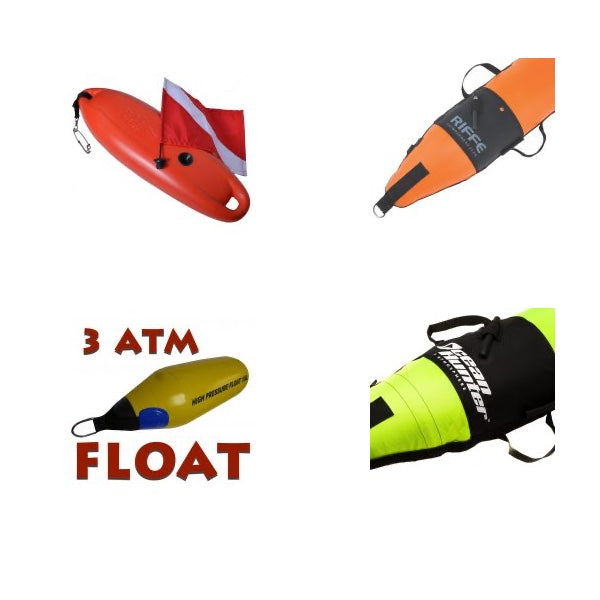
Spearfishing Floats - The Right Float For You
Choosing the Right Spearfishing Float for You
There are countless options for different types of spearfishing floats in different sizes and styles. You will need to do plenty of research to determine what size and type of float will meet your needs. In broad terms, there are four types of floats and we will be looking into the benefits and drawbacks of each type of float.
Inflatable Floats
Inflatable floats are generally inflated orally or by a bicycle pump. These floats come in a wide range of sizes which allows them to have different buoyancies. The biggest benefit to inflatable floats is that they compress to small sizes very easily. However, they have two major drawbacks. The first is that they compress as pressure increases, which means as a fish pulls the float deeper underwater, it will compress due to the ocean's pressure. The float gets less buoyant when it compresses which then reduces the strain on the fish. The fish is then able to pull the float deeper and the problem becomes worse and worse. There are also a wide range of durability and ability to withstand pressure with inflatable floats, so keep in mind that you get what you pay for.
Pressurized Floats
Although they are also inflated, pressurized floats are in a category separate from standard inflatable floats. While they are pricier than inflated floats, they tend to be a higher class because they are designed to be pressurized so they maintain their buoyancy to a depth of 66 feet (20 meters). This means that even if the fish drags them down, they won't lose their buoyancy. Most of the good pressurized floats are a torpedo design, and have around 100lbs of buoyancy. They compress down, are easy to travel with, and can be filled with a bicycle pump. Ocean Hunter floats and Riffe floats have a torpedo shape that helps them move well through the water when hooked up to a big fish or being dragged across the surface during your bluewater drifts. Learn more about the 3 atm float here.
Rigid Floats
Hard Floats are in two categories, foam-filled and hollow. Hollow floats are very durable and generally cost less than foam filled floats. They have fixed buoyancy and do not lose buoyancy as they begin to descend in the water. The drawbacks of hard floats is that they are bulky, which becomes a challenge when traveling. However, an even bigger drawback to the hollow core hard floats is the risk of the float imploding at depth. This happens as a result of large amounts of pressure pushing in on a hollow float and become particularly problematic because the large fish you shot that is pulling your float down has effectively removed any upward pull your equipment had on them.The issue of imploding hard floats has been effectively removed with the creation of the foam-filled hard float. The benefit of this there is less of a compressible vacuum within the float, so the float will keep its shape to significantly deeper depths. They still can implode at extreme depths, but that usually requires several hundreds of feet of water. Really the only drawbacks of the foam filled hard floats are that they are heavy and bulky, which makes traveling with them a challenge. But if it’s a trip for a fish of a lifetime, it may be worth the oversized luggage fee.
